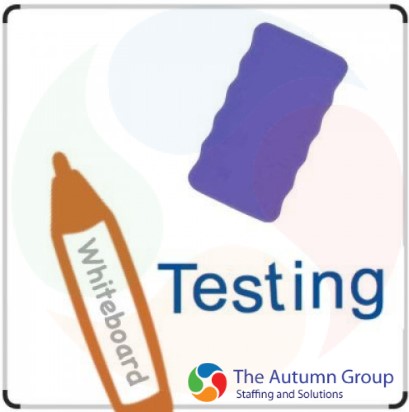TAG Blog

5 Quick Tips to Ace Your Whiteboard Interview
COMMUNICATE
This may seem like an bland piece of advice, but it’s actually the most important skill to prepare prior to an interview. These skills can be applied to any whiteboard-style interview. You are in the interview and your interviewers give you a whiteboard question. Do you step up to the whiteboard and immediately start solving the problem? No! Even though that tends to be instinct, but it’s actually not the right way to begin. Even if you understand the problem, you should take some very important steps before you begin. Be sure to understand what they’re asking you to do. Restate the question and seek affirmation from them. Make sure you completely understand what they’re asking you to do — maybe the question is similar, but not exactly the same, as a practice problem you have completed in the past. Restating the problem can only help you. It shows you can articulate a problem and gives you time to think it through a bit while you discuss. Furthermore, starting the discussion this way will help quell some nerves that might otherwise manifest while trying to solve the actual challenge.
The benefit of going through a recruiter for a position is that you will get the inside scoop! You will not be caught off guard. Your recruiter will be able to tell you what to expect in the interview. Furthermore, you can ask them what you need to be prepared. They will be able to give you hints like specifying the language in which they’ll ask the questions, the style of questions (find the bug vs. develop an algorithm), and the number of questions. The recruiter will also be able to tell you if you’ll be sitting at a computer or at a whiteboard. This is very useful information that you can use to practice and mentally prepare for you interview.
PSEUDOCODE
You’ll find yourself constrained if you start writing code in an actual language. Rather than trying to come up with the correct logic, remember the methods or other idiosyncrasies of the language. Instead, let your interviewer know you’re going to start by writing pseudocode and will fill in the actual code later. The interviewer may be more interested in how you think and will discuss your pseudocode with you. Software is not developed in a vacuum. The interviewer may tell you to continue without offering feedback, but might actually point out logical flaws in the pseudocode. This would benefit you when transitioning to actual code. If the pseudocode looks good, but you find that you are having trouble translating it to actual code, you may still be able to reason your way through enough to get the job. Furthermore, you can ask if there are any test cases that the function should pass.
QUESTIONS
Asking questions is typically encouraged. The whiteboard can typically feel like just a one-way conversation. Especially when you compare it to culture fit or behavioral interviews.
that doesn’t mean you can’t ask questions, and doing so may help you arrive at more meaningful answers. Once the interviewer asks the initial question, take a moment to consider whether everything is entirely clear (it probably won’t be!) before diving in. Ask any follow-up questions before even starting, and continue asking questions if they arise as you’re giving your answer. In addition to decreasing the chances that you make an error due to a simple misunderstanding, asking questions can demonstrate your ability to think critically. A valid, well-communicated thought process won’t always make or break a hiring decision. Lay out your steps to solve the problem to make sure that the interviewer understands where/if you make a mistake.
Be sure to reach out to our recruiters for more helpful whiteboard tips and check out of job board for daily updates of open positions.

